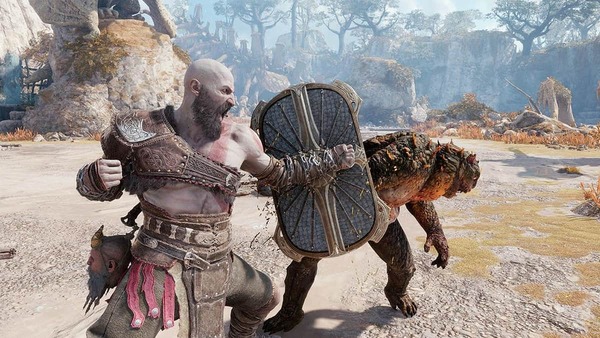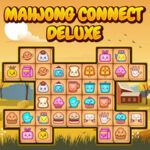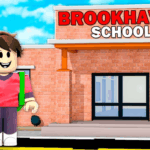Among Us - Two Weeks of Deception, Laughter, and Suspicion
In a world overrun by high-fidelity graphics, complex narratives, and fast-paced multiplayer combat, one deceptively simple game took the world by storm: Among Us. Developed by InnerSloth and initially released in 2018, Among Us didn’t gain traction until 2020, when global lockdowns gave people more time and the need for social interaction. Over the course of two immersive weeks, I delved deep into the chaotic corridors of the Skeld, the frozen silence of Polus, and the tense meetings of Mira HQ. What began as curiosity soon transformed into strategic obsession, layered suspicion, and unexpected friendships—and betrayals.
Let’s break down the two-week journey through this masterpiece of social deduction.
Day 1–2: The First Steps Aboard The Skeld
The initial moments of Among Us can feel overwhelming despite its simple controls. A short tutorial and a glance at the map teach the basics, but the real experience begins when the game starts.
Impostor vs. Crewmate:
Every match begins with players randomly assigned roles: Impostor or Crewmate. The tension spikes immediately if you’re the Impostor, as your job is to lie, sabotage, and kill—without being caught. As a Crewmate, paranoia sets in with every shadow and sudden movement.
Graphics and UI Simplicity:
The minimalist 2D art style works in its favor. Everything is clean, colorful, and immediately understandable. It's not graphically intensive, which makes it accessible to all devices.
Day 3–4: Learning The Language of Deception
By day three, the novelty wears off and is replaced by strategy. Now, it’s about understanding human psychology more than in-game tasks.
Mastering Discussion Time:
The emergency meetings and dead body reports are where the game really shines. Here, logical deduction collides with passionate accusations. “Red is sus” might be a meme, but understanding patterns—who was where and when—becomes critical.
Common Strategies:
-
Impostors pretending to do tasks
-
Crewmates sticking together in groups
-
Faking visual tasks like Medbay scans
Day 5–6: Map Mastery and Tactical Thinking
After basic familiarity, it's time to level up. Each map offers unique dynamics that change how games play out.
Map Highlights:
-
The Skeld – A well-balanced starter map with clear choke points
-
Polus – Outdoor setting, great for strategic kills and hiding bodies
-
Mira HQ – Fast-paced with limited security cameras
-
Airship – Large and complex, perfect for experienced players
Sabotage as a Weapon:
Good Impostors don’t just rely on kills. They use lights, doors, and reactor failures to isolate and eliminate players—or distract from bodies.
Day 7–8: Advanced Impostor Tactics
Now it’s time to thrive as the villain. Playing Impostor requires creativity, confidence, and timing.
Key Tactics:
-
Stack kills during group tasks
-
Create alibis by walking with others after a kill
-
Self-report bodies to build trust
Vent Routes & Kill Cooldowns:
Understanding vent systems and timing kills to perfection is crucial. Panic kills often expose Impostors, while planned murders lead to victories.
Day 9–10: Building a Crewmate Defense Strategy
Being a good Crewmate isn’t just about finishing tasks—it’s about survival and observation.
Tips to Survive:
-
Always note who enters and exits rooms
-
Stick with a buddy, but don’t blindly trust
-
Remember task bar updates; fake tasks don’t update it in some game modes
Emergency Meetings:
Calling meetings can be a double-edged sword. Use them wisely—to confirm suspicions or defend yourself—but excessive calls can lead to distrust.
Day 11: The Meta Game Emerges
Over time, you start seeing patterns. Players develop meta behaviors—ways of playing that rely on established norms or shared experiences.
Examples of Meta Tactics:
-
Stacking on tasks to mask kills
-
Suspecting those who talk too little—or too much
-
Using color stereotypes ("Red is always sus!")
Private vs. Public Lobbies:
-
Public Lobbies: Fast-paced but often chaotic, ideal for quick games
-
Private Lobbies: Strategic, especially with voice chat or Discord, where deep conversations unfold
Day 12: Playing With Voice Chat
Among Us changes dramatically when voice chat is introduced.
Discord Integration:
The ability to communicate freely leads to deeper accusations, quicker reactions, and more natural discussion flow.
Pros of Voice Chat:
-
Real-time defense
-
Better social engagement
-
Faster voting phases
Cons of Voice Chat:
-
Can be chaotic
-
Some players dominate discussions
-
Harder for shy players to participate
Day 13: Mods, Custom Modes, and Community Content
The community has breathed new life into the game with custom mods and fan-created game modes.
Popular Mods:
-
Sheriff Mod: One Crewmate can kill Impostors—but risks killing wrong players
-
Jester Mod: A player tries to get voted out to win
-
Engineer and Guardian Angel Roles: Introduce new dynamics and defense options
Custom Games:
-
Hide and Seek Mode
-
Proximity Chat Using CrewLink
-
100 Player Among Us – chaotic and hilarious
Day 14: Final Impressions and Longevity
After two full weeks, Among Us remains fun—but it’s the people that make or break it.
The Social Factor:
It’s not just a game; it’s a social experience. The gameplay loop is simple, but every match is different because people are unpredictable.
Staying Power:
While popularity has declined from its 2020 peak, regular updates, map additions, and mod support have kept it alive.
Pros and Cons
Pros:
-
Unique gameplay rooted in social interaction
-
Cross-platform play on mobile, PC, Switch, Xbox, and PlayStation
-
Low hardware requirements
-
Excellent for parties and group gaming
-
Supports mods and custom games
Cons:
-
Repetitive tasks over time
-
Dependent on group dynamics; less fun with silent or inactive players
-
Public lobbies can be toxic or filled with rage-quitters
-
Limited depth without voice chat or close-knit friends
Expert Rating: 8.7/10
Among Us doesn’t rely on visual spectacle or deep narratives. It thrives on tension, creativity, and deceit. Its simple mechanics mask a surprisingly complex social game that challenges your ability to lie, deduce, and manipulate. Best enjoyed with friends and a mic, it’s the kind of game that makes you say, “Just one more round,” even after five hours.






























